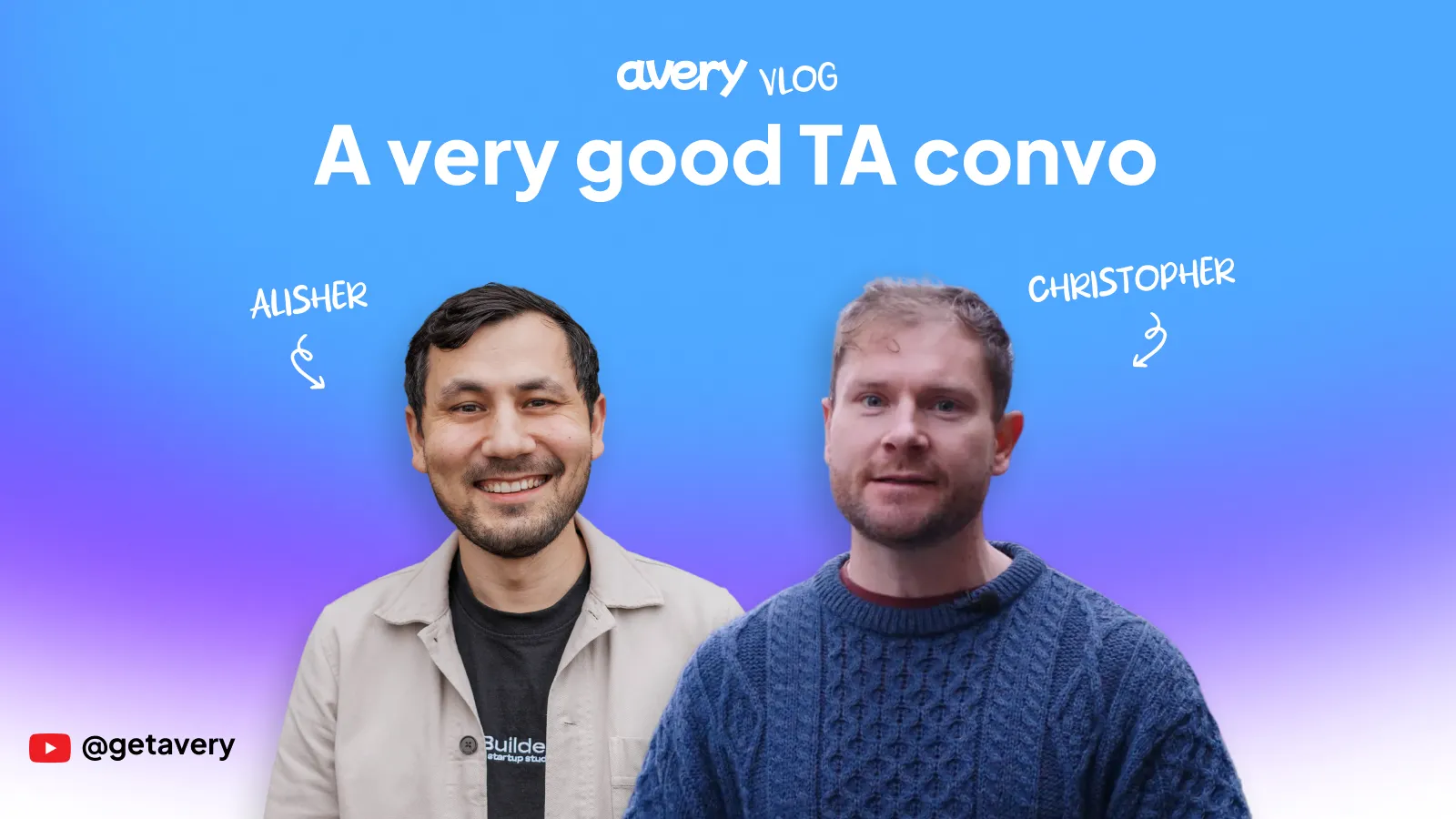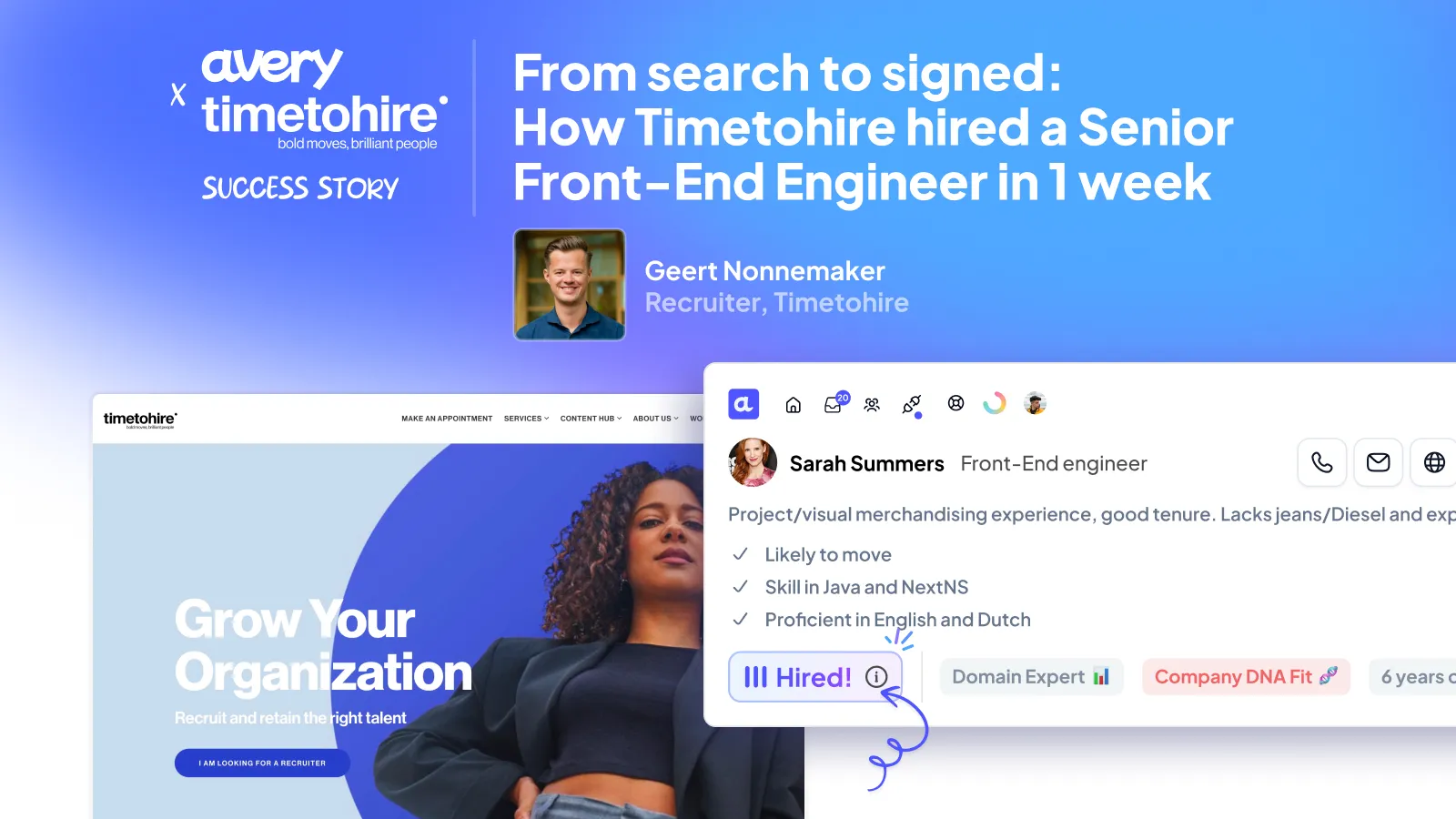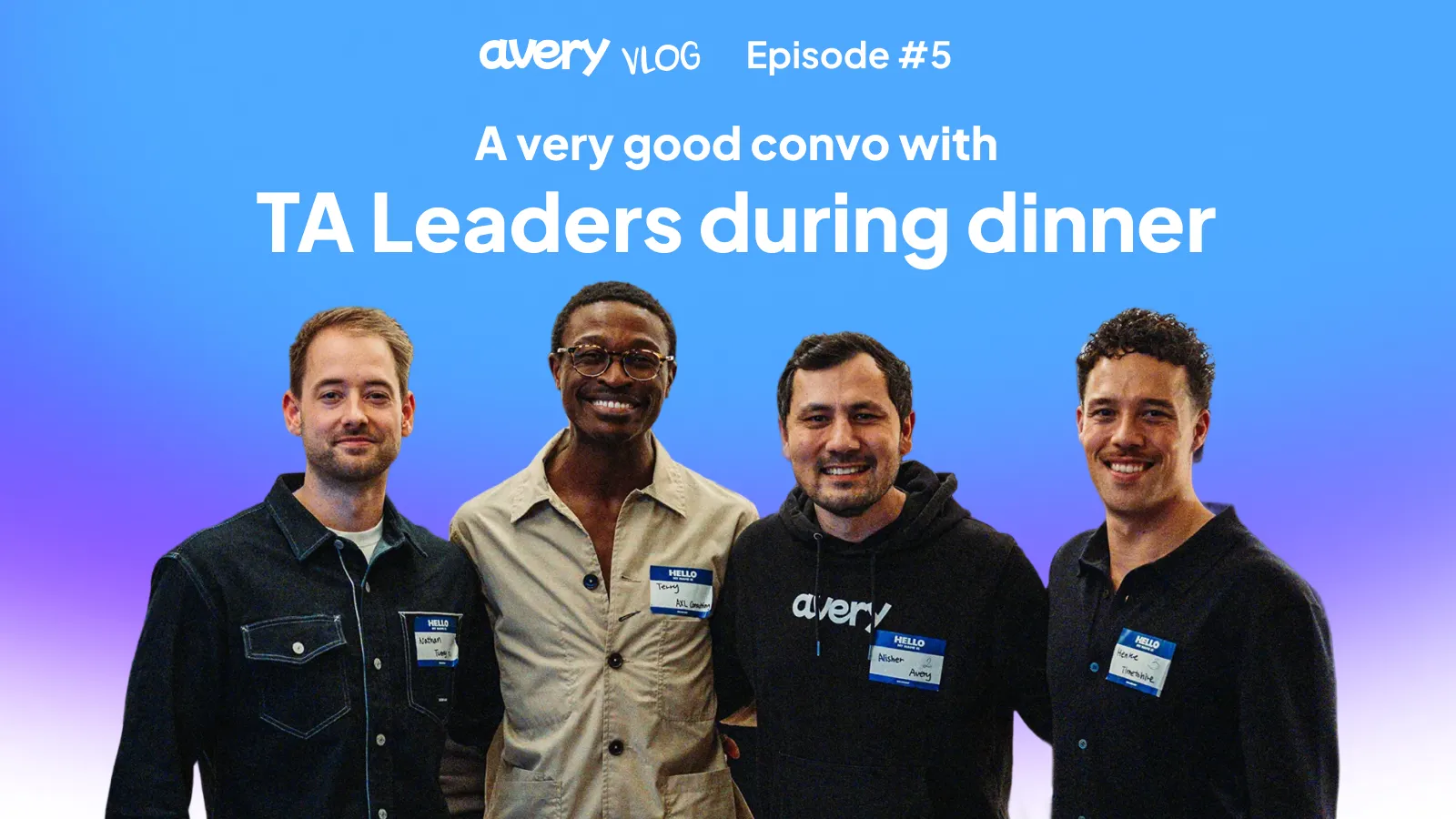AI in talent acquisition: balancing efficiency and candidate experience
Article created in collaboration with Giovanni Di Felice, Global Head of TA at Statista (ex-Delivery Hero, Zalando).
.avif)
In today's competitive talent market, organizations must hire with both speed and empathy. Candidate experience is no longer a 'nice-to-have'; it is a core differentiator. With 75% of job seekers considering an employer's brand before applying, every interaction matters.
This article explores how leading talent acquisition (TA) teams are leveraging AI to improve the candidate experience without sacrificing efficiency — backed by insights from over 500 hiring stakeholders and an in-depth conversation with Giovanni Di Felice, Global Head of TA at Statista (formerly Delivery Hero, Zalando).
The evolution of candidate experience in the digital age
Candidate experience spans every interaction a job seeker has with your organization. Traditionally, recruiters faced a painful tradeoff: personalised journeys or operational speed, but not both.
“AI is enhancing several aspects of the recruitment process, particularly when it comes to tailoring outreach messages”
Giovanni explains,
“Recruiters often don't have time to create personalised messages for each candidate, yet we want to show that we care about the profiles we see. AI can help us craft tailored emails where we can concretely highlight why we contacted that specific profile in a way that sounds genuine while removing the time spent on crafting these messages.”
.avif)
According to research, AI recruitment tools can improve hiring efficiency by up to 22.6% within the first 12–18 months of implementation. However, as Giovanni points out:
“The most innovation and improvements are not directly happening on the candidate experience, but rather on the candidate selection.”
This distinction matters when evaluating where to invest in AI solutions. The opportunity lies in combining tech with trust and maintaining the human touch where it matters most.
The evolving role of talent acquisition
When asked how the talent acquisition function is changing with AI adoption, Giovanni offered a compelling perspective:
“The talent acquisition role is becoming less and less transactional and moving closer to that of an HR Business Partner or People Partner. Today's dashboards give us control over so much data simultaneously — attrition, performance reviews, etc. — putting us in a position to have a say in succession management and strategic decisions.”
.avif)
This expanded view allows TA to participate more strategically in workforce planning:
“We can now have a say on how we do succession management — whether a replacement has to be triggered right away or maybe whether it makes sense to wait or combine it with another role.”
Looking ahead:
“In smaller organizations, the roles will probably merge completely. But in larger organizations, HR business partners might focus more on specialized areas such as change management or global mobility, supporting the transition of profiles between regions.”
The candidate journey reimagined
Before implementing solutions, teams must map their candidate journey:
Awareness → Consideration → Application → Selection → Onboarding
Key steps to optimize:
- Define candidate personas
- Map touchpoints and communication channels
- Gather candidate feedback through surveys and interviews
- Identify bottlenecks and fix them using AI and process improvements
At Statista, Giovanni points out that AI is making significant improvements in candidate selection:
“Well-chosen modern ATS allows recruiters to create predefined prompts that give you a ranking of incoming profiles, enabling you to prioritize the most relevant candidates without automatically rejecting profiles — which would be risky for candidate experience.”
And:
“Something useful that we have in our ATS, for example, is the ability to merge interview feedback and scorecards into one summary through AI once you've interviewed several candidates. The system can even group different feedback into criteria, which is tremendously helpful for the efficiency of the hiring process.”
Automate responsiveness, not empathy
Recruiters flagged these common breakdowns:
- Delayed feedback from interviewers
- Slow scheduling
- Lack of transparency around interview steps
- No personalization in rejections
“I jumped on a 10-min call with a candidate after rescheduling them twice. That made all the difference.”
Where AI helps:
- Calendar sync and automated scheduling
- Chatbots for FAQs and interview reminders
- AI-generated interview prep and feedback prompts
- Auto-generated, tailored rejection messages
Giovanni stresses the need for balance:
“I don't see direct candidate-hiring manager engagement happening because what an HR organization brings is the right sensibility to understand the timing of certain messages and the perspectives from which they should be addressed. We also know the legal framework, which hiring managers often don't.”
And:
“I've seen hiring managers who like a candidate and think it's a good idea to immediately tell them, 'I liked you. Later today, this other stakeholder has two minutes to speak with you. Shall we make it happen on the spot?' You need a mediator to say, 'Let's take some time, digest the feedback, and then set up the next step.' There needs to always be a mediator, especially for cultural and legal perspectives.”
Designing for trust and transparency
Great experiences are built on clarity:
- Set expectations at the first touch
- Be transparent about where and how AI is used
- Explain decision-making processes clearly
TRUST Framework:
- Transparency: Show how decisions are made
- Responsiveness: Communicate quickly
- User-centered: Meet candidate needs
- Standardization: Reduce bias and increase consistency
- Touchpoints: Include human check-ins where needed
Giovanni warns:
“Talent acquisition teams may be abusing AI by using tools that engage in excessive data collection and opaque evaluation practices... often without informed consent.”
“Candidates are sometimes assessed using facial recognition, vocal tone analysis, or body language interpretation during AI-driven video interviews... despite these methods lacking scientific validation.”
And:
“I've heard of companies asking candidates to produce videos that are then rated by AI, but this isn't an approach I would consider. The key is implementing AI and automation without harming the people in the process.”
.avif)
Feedback as a brand touchpoint
How you reject matters:
“We're piloting AI-generated rejections that reference feedback themes, not just 'thanks but no thanks.'”
Tips:
- Tag feedback themes from scorecards
- Use rejection templates tied to role fit or experience gaps
- Keep silver medalists warm with newsletters or future-fit alerts
“Something that would be very useful is a tool that scores take-home challenges, code submissions, or presentations — not providing a final assessment, but offering an initial evaluation that hiring managers can then validate.”
Personalized engagement at scale
AI can deliver job recommendations, personalize responses, and suggest content aligned with candidate interests.
“We can empower recruiters with ultimate note-takers and AI-generated ranking criteria. We could also potentially develop AI forecasts about hiring feasibility — finding out whether candidates are open to relocation or how likely they are to accept an offer, for instance.”
.avif)
Streamlining the application process
AI simplifies application through:
- Inclusive job descriptions
- Mobile-first applications
- Pre-filled fields via resume parsing
“It would be nice to have something like a bot where you can just ask, e.g., 'What is the pass-through rate for this stage in particular? How is the funnel conversion for this role vs similar ones in the last 2 years?'”
Measuring what matters
Track:
- Time to first contact
- Feedback turnaround time
- Candidate satisfaction (NPS)
- Drop-off rates per stage
- Offer acceptance rate
Use this data to continuously improve and calculate ROI:
ROI (%) = ((Total Benefits - Total Costs) / Total Costs) × 100
“We managed to build powerful dashboards that put us in a position to have control of so many data points simultaneously. This enables us to have more strategic conversations about workforce planning and talent needs.”
Addressing pitfalls and bias risks
To avoid blind spots:
- Train AI on diverse datasets
- Run audits for bias
- Implement blind recruitment (e.g., anonymized profiles)
Upskill recruiters:
- Start with pilots
- Choose user-friendly AI tools
- Provide ongoing AI literacy training
Conclusion: designing the future experience
AI should never replace human connection — but it can enhance it.
As Giovanni demonstrates at Statista, the most successful TA teams pair automation with empathy and process rigor with personalisation.
By blending AI-enabled speed with human-centered moments, you can:
- Build stronger employer brands
- Improve hiring outcomes
- Deliver experiences that stand out in the market
“People will forget what you said... but they'll never forget how you made them feel.” — Maya Angelou
.avif)
This perfectly applies to candidate experience — where the right balance of technology and humanity becomes a true competitive advantage.
Disclaimer
As a team, we’re working hard to help tackle exactly these kinds of hiring challenges: balancing AI-enabled efficiency with human-centered candidate experience. It’s a focus at Avery and one we’re constantly refining.



